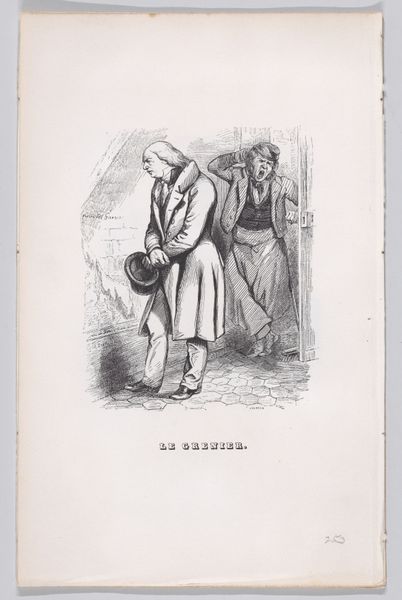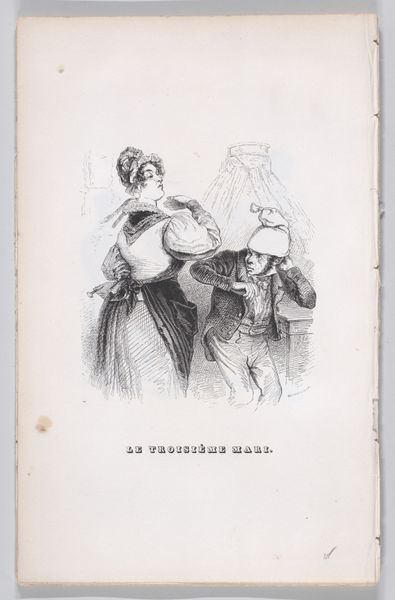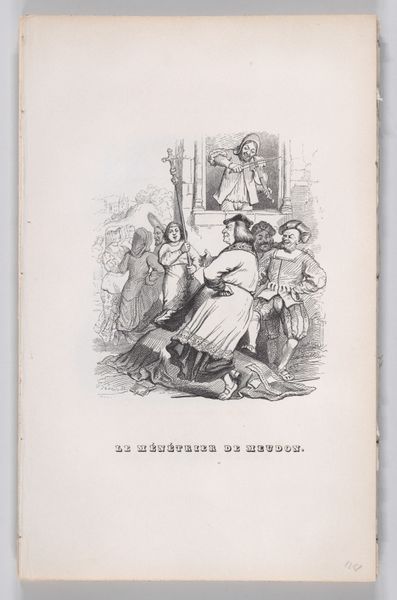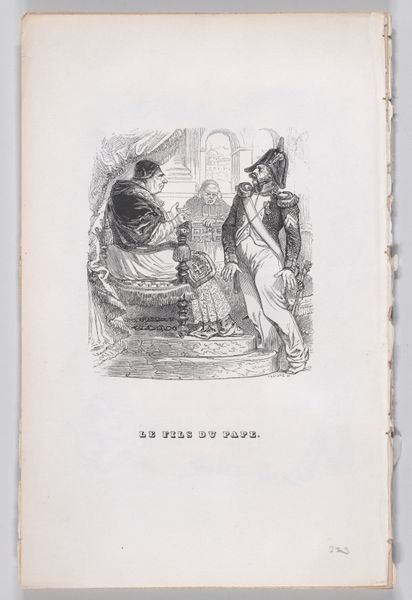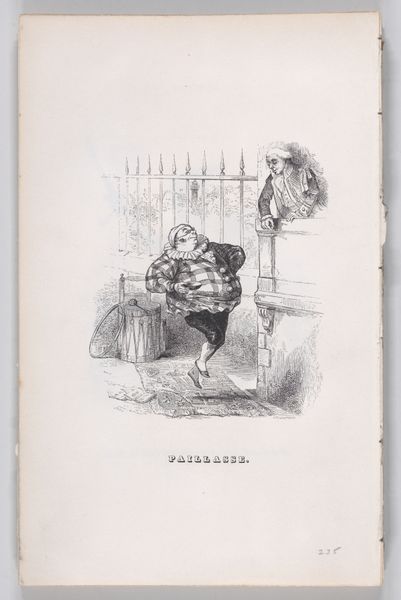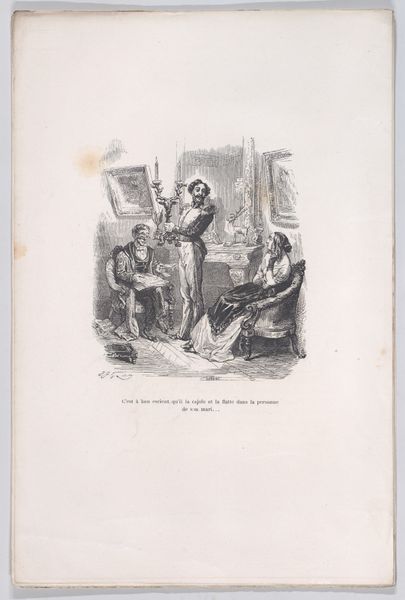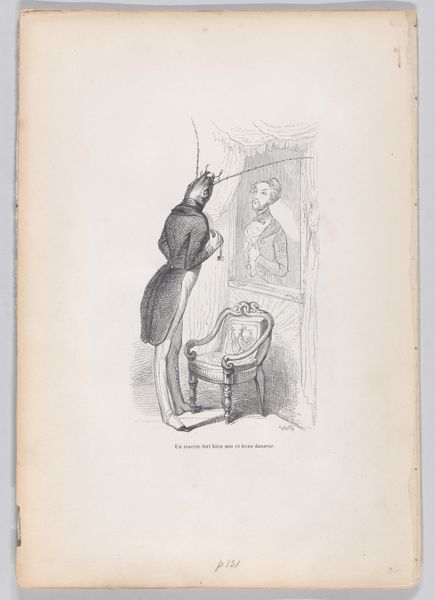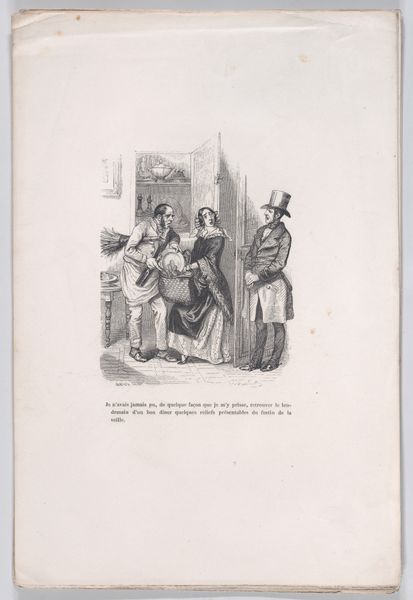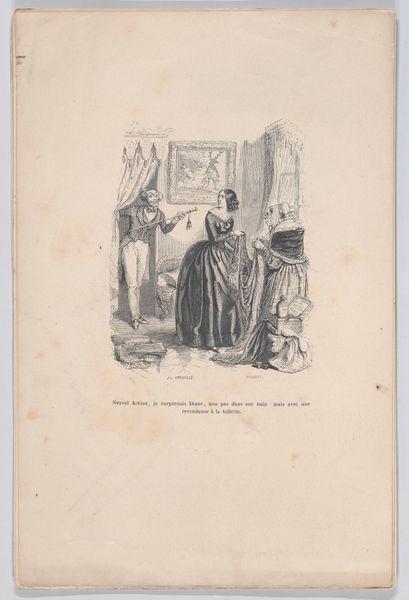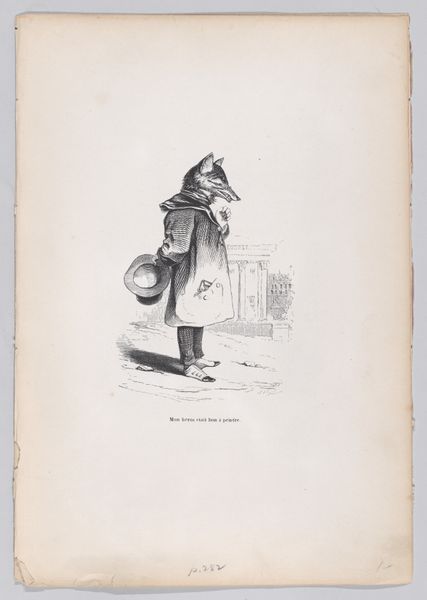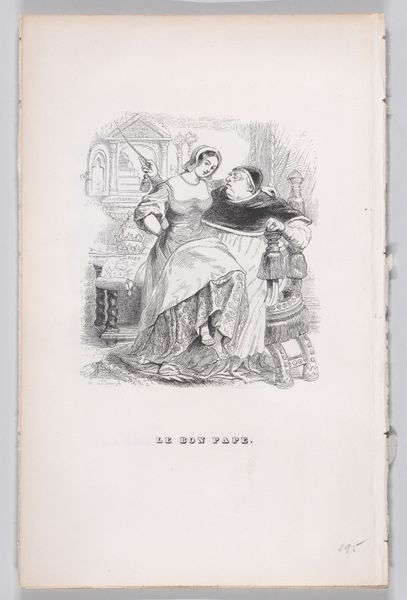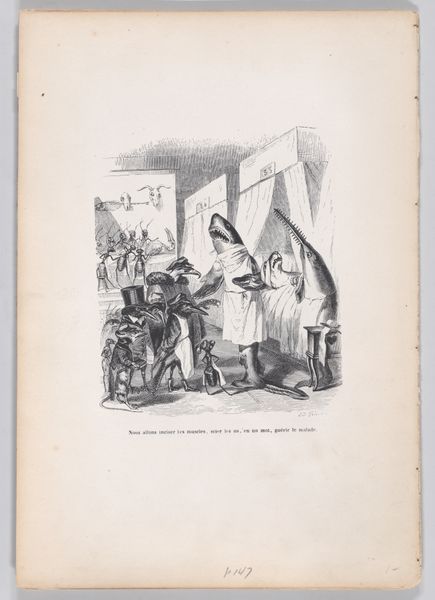
"The Poor Woman" from The Complete Works of Béranger 1836
0:00
0:00
drawing, lithograph, print, paper
#
drawing
#
narrative-art
#
lithograph
# print
#
figuration
#
paper
#
romanticism
#
genre-painting
Dimensions: Sheet: 8 5/8 × 5 1/2 in. (21.9 × 14 cm)
Copyright: Public Domain
Editor: Here we have J.J. Grandville’s lithograph, “The Poor Woman,” created in 1836. The stark contrast between the finely dressed bourgeois and the kneeling, elderly woman is striking. How do you interpret this work, particularly within its historical context? Curator: It’s a powerful depiction of the socioeconomic disparities in 19th-century France, particularly relevant during the July Monarchy. Grandville critiques the emerging bourgeoisie, indifferent to the plight of the impoverished. Consider the positioning: the well-dressed figures, shielded by umbrellas, literally walk past the kneeling woman. How does that visual contrast highlight the systemic issues at play? Editor: It feels very deliberate – they’re almost turning away from her, creating a visual and emotional distance. The poor woman is right there, but they barely acknowledge her. Curator: Exactly. This resonates with the broader societal indifference to poverty, particularly impacting women. We must ask: What narratives are silenced when economic power dictates who is seen and heard? Grandville is using Romanticism, not to idealize the past, but to expose the inequalities of the present. Do you see how his choice of medium—the print—also democratizes the message, making it accessible to a wider audience? Editor: Yes, producing a print means it could be distributed more easily and widely. I guess I hadn't considered that aspect of its creation. Curator: Considering access and representation in art, especially in a piece focused on social disparity, helps to amplify Grandville's message. It forces us to consider the ongoing struggles against economic inequality, gender bias, and class division. Editor: This artwork really highlights how much context shapes not only our understanding but also the artwork's intention. Curator: Indeed. And recognizing those contexts allows us to actively engage with the artwork as a form of social commentary, then and now.
Comments
No comments
Be the first to comment and join the conversation on the ultimate creative platform.

